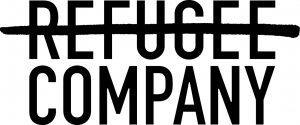ANBI (PUBLIC BENEFIT ORGANISATION)
Refugee Company is qualified as a Public Benefit Organisation (ANBI) by the Dutch Tax Administration, which means we do not pay inheritance tax or gift tax on inheritances, or gifts awarded to us to the public benefit. Also donations by us to the public benefit are exempted. Natural and legal persons who donate to Refugee Company can deduct their gifts from Dutch income tax or corporate income tax, when meeting a number of conditions: ANBI Conditions
MISSION
Refugee Company contributes to an inclusive society by:
- Supporting refugees to take an important step towards social and economic independence by creating jobs, either paid or voluntarily. By participating, people become stronger and happier.
- Inspiring society to be more open towards people with refugee backgrounds, show appreciation and help them in their search for a meaningful life in the Netherlands.
PRIORITY SHARE BOARD
The board of Refugee Company foundation has a priority share in the social enterprises A Beautiful Mess and Mondmaskerfabriek and keeps supervision on the activities, the mission and the policy of these enterprises. In accordance with our statutes, the board can veto as a a priority shareholder, if the social mission of the company is endangered.
BOARD
Harvey Lansdorf – Chairman
Menno Bol – Treasurer
Diem Do – Board Member
Henk Jan Beltman – Board Member
Hord Wbi – Board Member
STATUTES
Statutes Refugee Company
Social Governance (organogram)
RENUMERATION POLICY
The board performs its duties without renumeration. Team members (including Management Team) at Refugee Company get paid in accordance with the CLA for the Dutch healthcare and social care industry (CAO Sociaal Werk)
THEORY OF CHANGE
STAKEHOLDER DIALOGUES
Through a stakeholder analysis, we mapped all parties involved with our organization and identified our primary and secondary stakeholders. We believe that ongoing dialogue with our stakeholders is an important way to increase our impact and our ability to innovate. Next steps include improving the structure of these dialogues, initially through a dialogue analysis.
Stakeholderanalysis
Stakeholder dialogue

